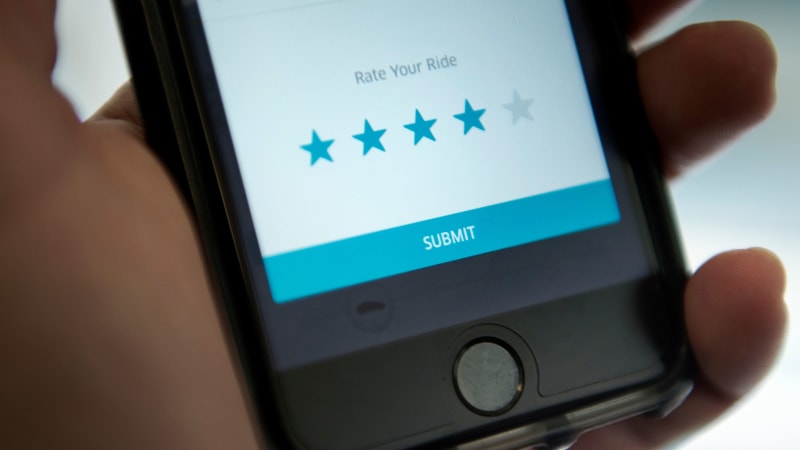Audi Repair Shop Doylestown
Call 267 279 9477 to schedule a appointment

After a perfectly fine
trip in San Francisco a while back, up popped the screen asking me to rate my ride. I gave 4 stars out of 5, thinking that was a pretty good grade. Imagine my surprise, then, when the driver was anguished and wanted to know what he’d done wrong. It turns out that both Uber and
drivers need near-perfect 5 ratings to stay active.
According to Harry Campbell, founder of
and author of “
,” “A 4-star rating for Uber and Lyft drivers is actually a failing grade, as they need to maintain a 4.6-star rating to stay active on the platform. I like the idea of the ratings system but in its current implementation, it causes a lot of unneeded worry and stress for drivers. Even though the average rating is 4.8 stars for drivers, a lot of us worry about our rating since there isn’t a way to challenge ratings that were given for reasons beyond our control or to even see why we’re getting low ratings.”
Stress for passengers, too, since they often don’t realize they’re sabotaging a driver’s career with a “low” rating. After all, a 3- or 4-star rating for a record or movie would be considered pretty good. The ridesharing standards seem ridiculously high. Lyft
, “Anything higher than 4.8 is awesome. If your rating is below 4.8, you may want to consider ways to improve it. Consistently low ratings can put you at risk of deactivation.” Uber states, “Since your overall rating is based on an average of up to 500 of your most recent trips, an individual trip rating will not have a significant impact on your overall rating.”
But drivers get upset about just one sub-5 pulling them down. A BMW-driving Uber pilot in Boston named “Cicadaguy” got upset when “out of the blue my 5-star rating was blemished with a 4-star rating. So now I am at 4.99.” He asked, “How long will it take for me to get back up to a 5-star rating again?” Maybe never.
Campbell is critical of the companies’ approach. “Uber and Lyft don’t pass negative comments back to drivers, but also don’t provide any training to drivers. So as a driver, you may see your rating falling but have no idea what to do to improve it.”
Actually, Uber does
with low ratings to make sure they keep their vehicles clean; stay polite, professional and respectful; dress nicely; open doors for riders; provide such amenities as bottled water and phone chargers; and help with luggage. But the Uber driver I hit with a 4 had done all of that—I just didn’t know it was a bad rating.
And Lyft, at least, has taken steps to improve the process. On May 21 it announced what it calls
. “In cases when a rider rates less than 4 stars, they will be required to provide additional insight so our support team can take appropriate action as necessary,” Lyft said. “Feedback for drivers will be anonymously communicated to drivers in a single location found in the driver app — so they are clear on how to improve and provide the best possible experience for riders.”
Of course, this policy still allows Lyft riders to give the hated 4 stars
without
providing feedback.
Current drivers have varying responses to Uber’s ratings. Roy, an Uber driver in the New York area when he’s not doing limousine runs, has gotten exactly two 4 ratings in the 4,000 trips he’s made. “It hurts when I get a 4,” he said. One of the two 4s he got was from a young college student who got both a bottle of water and free upgrade and thanked him for the pleasant ride.
According to Roy, “I asked her what rating she was going to give me, and she said, ‘4, because my daddy says there’s always room for improvement.’ I wanted to say to her, ‘Give me back my bottled water.'” The other 4, Roy said, was from a passenger who complained that he’d diverted from the prescribed route, even though his app told me that he’d have faced a 12-minute delay that way.
Roy said he contacted Uber explaining the circumstances and says he was told he’d never get back to a perfect 5, that it’s a career score. “I had to do 150 5-star trips just to get back to 4.8,” he said. Today, he’s at 4.98, but wishes he could go back to 5.
But Julia, an Uber driver in Connecticut with 14,000 trips in four years, said she has gotten a dozen or so ratings below 5, and now has a rating of 4.89. “I don’t worry about it,” she said. “Who cares? It’s a perfectly good rating, and I’ve never given an ounce of water to anyone.” She thinks Uber’s rating system is basically fair.
Two drivers contacted through
, an independent association in Los Angeles, also had their gripes.
“Uber does not do a good job at explaining the rating system,” said James Hicks. “How it works and why it’s important. Usually a 4 is good and a 5 is great, but if we have too many rides that are just ‘good’ we get in trouble. Uber doesn’t even describe the difference between ‘good’ and ‘great.’ It’s an outdated system that puts consistently good drivers in danger of losing their jobs.”
Alvaro Bolainez adds, “If the driver’s rating falls below 4.7 he or she is at risk of getting deactivated, and a lot of drivers can’t afford to get deactivated due to bad rating. Sometimes passengers request a pool ride and the driver has to go pick up another passenger. Then if the passenger is late for work, they’ll blame the driver, who will get a bad rating. A lot of time we pick people up who were smoking weed and the next passenger gets in the car and smells the weed, then gives a bad rating. There are a lot different ways a driver can get a bad rating.”
It’s worth pointing out that an Uber driver’s rating can also be reduced for reasons other than passenger feedback, including declining to accept rides when the app is turned on. This seems fairly onerous, because sometimes drivers simply forget to log off and then get requests they can’t fulfill.
Uber failed to respond to press inquiries about the star ratings for drivers; Lyft sent word of its new mandatory feedback policy.
from Autoblog http://bit.ly/2Z3nDe4
